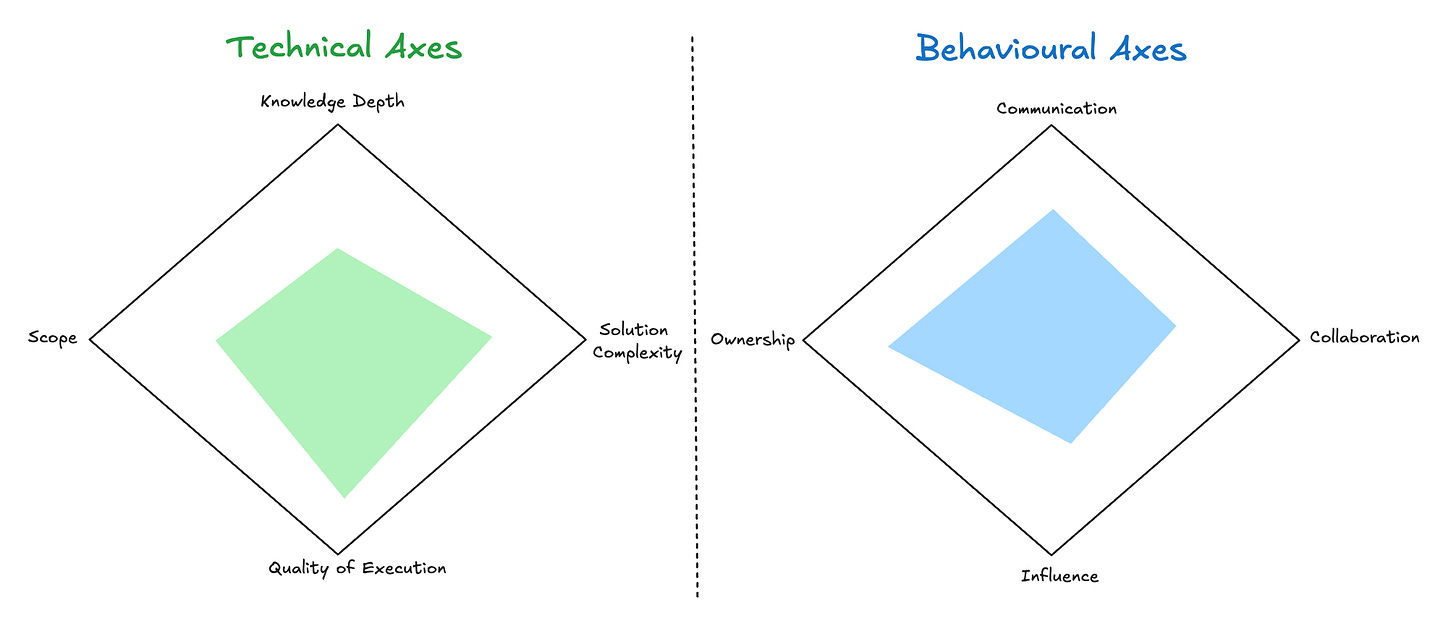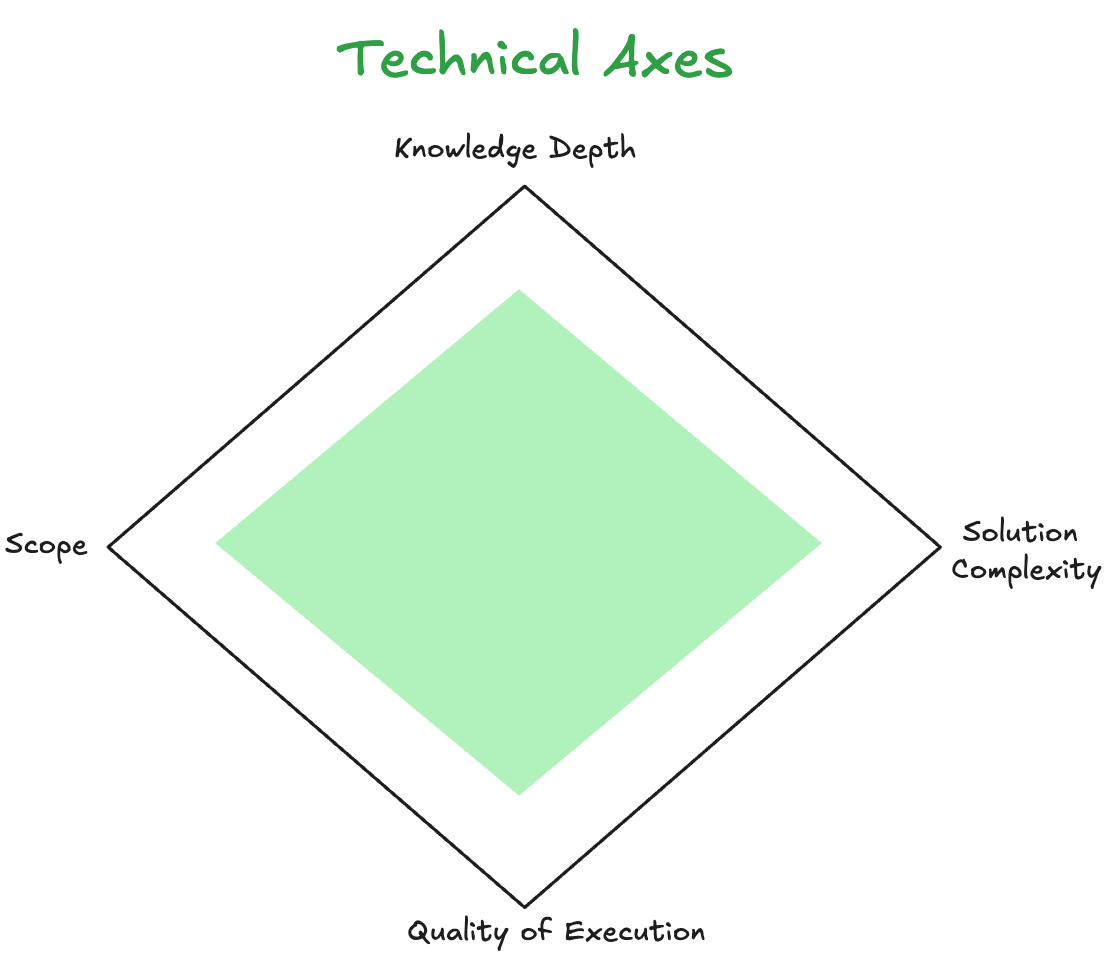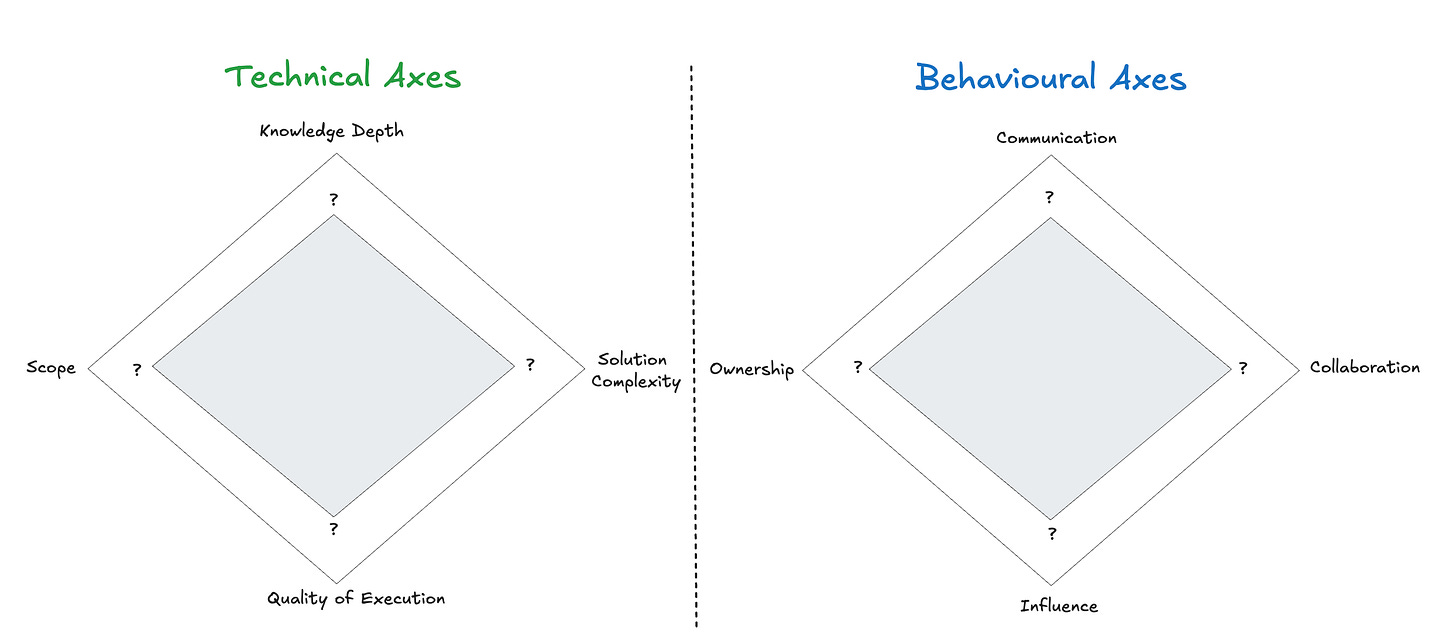#32 How to Write Great Feedback
Most resources online provide a generic advice on writing feedback, like ‘be kind’ or ‘make it useful’. While these are good basics to have, they don’t add much value for the recipients because it lacks concrete examples or focus areas that engineers can learn from. In this post, I’ll share examples on how to provide contextualised feedback and highlight the growth axes engineers should focus on.
First, Feedback 101
If you’re new to providing feedback, I recommend following one of the two guides below. This will help you structure your responses in a meaningful way to get started.
Situation-Behaviour-Impact (SBI)
Situation-Task-Action-Result (STAR)
There are probably 10 more guides out there, but they all follow the same idea (describe a scenario and what the person did). I wouldn’t spend time reading them all if you’re already familiar with SBI or STAR.
Now, let’s talk about giving feedback to engineers using the growth axes.
Growth Axes: Technical and Behavioural
Growth axes are an abstraction of technical and soft skills. They highlight key areas engineers should focus on and group them into two main categories. When writing feedback or doing self-assessments, it’s helpful to view these axes and see the “deltas of expansion” over time. This way instead of asking, “How much did this person improve as an engineer?”, you can reframe it to, “How much more scope has this person taken on since last time?”.
First, the Technical axes measure a software engineer’s core skills and ability to solve complex problems. These include how well they understand underlying systems (knowledge depth), the creativity and complexity of their ideas (solution complexity), the quality of their code and design (quality of execution), and the challenging projects they can take on (scope).
Second, Behavioural axes measure how someone operates within a team: how they communicate ideas and ask questions (communication), work with the team (collaboration), take initiative and introduce new ideas (influence), and demonstrate a leadership-like attitude in getting things done (ownership).
Using growth axes to provide feedback is an effective way to link a person’s performance to the traits most valued at work. The best type of feedback is when it helps the recipient progress in either the Technical or Behavioural axes, making sure they’re moving in the right direction and ultimately getting promoted.
🌟 Tip: Most engineers (especially junior-level) tend to focus heavily on the Technical axes. Highlighting the Behavioural axes in your feedback is a great way to broaden their perspective and emphasise the importance of soft skills in the workplace.
Now, let’s go to contextualised feedback.
Contextualised Feedback
Contextualised feedback is just a fancy way of saying, “provide a specific example of when a particular action occurred”. It works best when you highlight a specific scenario with a delta on how to handle the scenario better next time. If they have an “Aha” moment from your feedback examples, that’s a sign of great feedback!
To illustrate, here are four examples of contextualised feedback:
1) Alice is a strong IC, but needs to start scoping work.
“Alice did an excellent job on delivering X and supporting her team, great work! For further growth, I’d recommend she start focusing on technical planning. This is an opportunity for her to stretch her high-level thinking and think about trade-offs when designing a new feature. For example, in her next project she can start writing an RFC document to propose a solution, discuss it with the team, and break it down into tasks. This will help her build confidence in scoping more complex features”
2) Bob did a good job on his first tech leading, but needs some pointers.
“Bob’s project as a first-time tech lead was a success, well done to him! I noticed however some coordination challenges when managing work across a few team members. For example, I noticed in situation X and Y where he had to step in multiple times to support a junior engineer and unblock their work, which left him with little time to prepare for design meetings. While supporting the team is a great quality of a tech lead, one area for improvement is identifying tasks he can delegate to more experienced team members. This would empower them to support junior engineers with less-friction tasks, essentially creating “clones” of himself through the more experienced engineers. I’m happy to share more tips on that!”
3) Charlie needs to further develop his technical skills.
“Charlie showed strong ownership when working on X, which I’d encourage him to keep doing! I also noticed his passion for backend engineering during our weekly catch-ups. One area for growth would be to deepen his knowledge by tackling more challenging backend tasks or leading small initiatives to improve our product’s infrastructure. This would be a great opportunity to ask the tech lead for more challenging work and guidance for improving his technical chops.”
4) Emma is afraid of asking questions.
“Emma did an excellent job managing project X and handling comms around Y. This was really helpful for leadership’s context, so kudos to her! I did notice she sometimes hesitated to ask questions during our bi-weekly leadership calls, especially around Z, which is totally understandable. For growth, I’d encourage her to start asking questions (even basic ones) during planning meetings to clear up any miscommunication and build confidence to ask tougher questions with leadership. I’m happy to chat more and share resources that helped me with this too.”
Helper Questions for Writing Feedback
For writing great feedback, here are some of the questions I often copy-paste from my template:
What projects did I work on with this person?
(A bullet list is fine)
What stood out when I worked with them on each project?
Something cool they did or an initiative that was valuable.
What do I want them to do more of or keep doing?
This could be anything. For example, how they manage a weekly meeting. If that was useful, I’d want to reinforce the behaviour through recognition.
How would I score this person (1–10) on the Growth Axes?
Note that the goal is not to provide “official scores”, but to help understand my perspective on their strengths and areas for development.
If this were my feedback, are there any examples that would make it more helpful?
For example, on the “Influence” axis, this could be leading an idea or an initiative. On the “Quality of Execution” axis, this could be recommending an engineering book or do some pairing.
Conclusion
Writing great feedback is an underrated skill. Every 6-12 months, you’ll be asked to write feedback for your peers, managers, and direct reports. If the process feels like hitting a brick wall each time, that’s a missed learning opportunity. Having a systematic approach reduces the friction of writing and allows you to share meaningful insights that the reader can build on. This is what drives engineers (and everyone) to grow in their careers and have meaningful conversations with their managers.
The last things I’d say is:
Be empathetic: The person receiving feedback is probably feeling just as uncomfortable as you are.
Be specific: Avoid ambiguous statements. Provide a clear example with a delta on how to handle the situation better. (Remember, contextualised feedback)
Be welcoming: Allow room for discussion. They might have something new to add or clarify.
And that’s another made-up framework for you, ESW. 👀
Finally, the one piece of advice I’d give to those receiving feedback is this:
If you accept the fact that there will always be room for growth, you’ll never be afraid of feedback.
If you’re finding this newsletter valuable, share it with a friend, and consider subscribing if you haven’t already.







